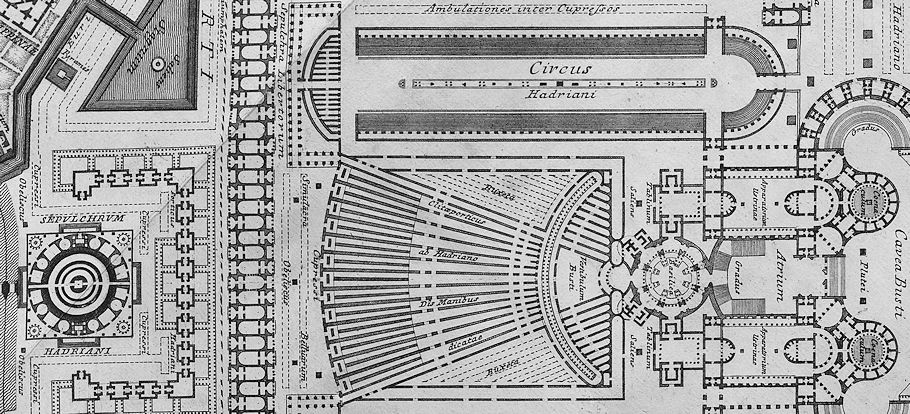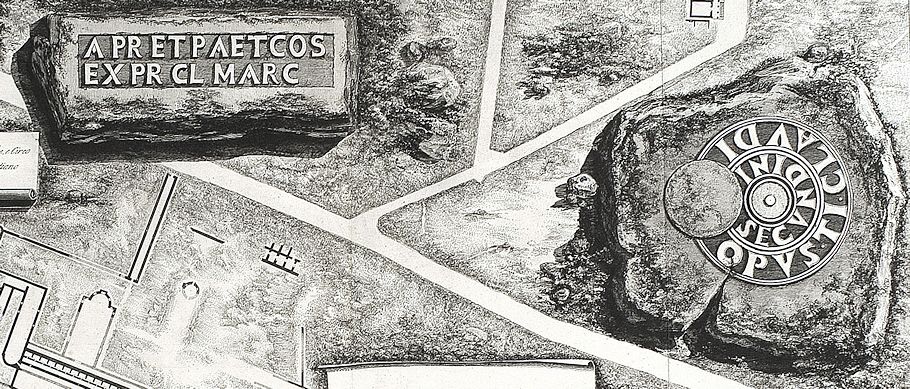The Discovery of Piranesi's Final Project |
|
Other than the accurate plan formation of the circus, the 'plan of the remains of an ancient Villa, its buildings, and the circus commonly known as Caracalla outside Porta S. Sebastiano' offers further inimitable information. Fully unawares, Piranesi recorded the munus,8 the funeral games site, in honor of Valerius Romulus, the young son of the emperor Maxentius, who died in 309 at around the age of fifteen. Valerius Romulus was buried in the cylindrical structure surrounded by the rectangular arcade, and the rest of the ruins are very likely the remains of the dining hall where the munus came to an end. This whole complex of tomb, circus and dining hall is nothing less than a gigantic "machine" which facilitates the passage from this life to the next. What Piranesi did recognized however, is that he had already inventively reconstructed a similarly programmed group of buildings, the Bustum Hadriani within the 'Ichnographia Campus Martius,' hence finding an actual munus site along the Appian Way positively confirmed the veracity of Piranesi's own reconstructive design intuitions with regard to the proper architectural manifestation of a munus--correct and proper in all respects except for, of course, the dysfunctional symmetry of the circus plans.
|
|
8. "For formerly, in the belief that the souls of the departed were appeased by human blood, they were in the habit of buying captives or slaves of wicked disposition, and immolating them in their funeral obsequies. Afterwards they thought good to throw the veil of pleasure over their iniquity. Those, therefore, whom they had provided for the combat, and then trained in arms as best they could, only that they might learn to die, they, on the funeral day, killed at the places of sepulture. They alleviated death by murders. Such is the origin of the 'Munus'." --Tertullian, De Spectaculis
|
««««
calendar
»»»»
|


